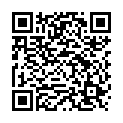|
|
|
| Module code: KIB-HCI |
|
|
4V (4 hours per week) |
|
5 |
| Semester: 5 |
| Mandatory course: no |
Language of instruction:
German |
Assessment:
Project work
[updated 26.02.2018]
|
KI636 Computer Science and Communication Systems, Bachelor, ASPO 01.10.2014
, semester 5, optional course, technical
KIB-HCI (P221-0062) Computer Science and Communication Systems, Bachelor, ASPO 01.10.2021
, semester 5, optional course, technical
KIB-HCI (P221-0062) Computer Science and Communication Systems, Bachelor, ASPO 01.10.2022
, semester 5, optional course, technical
KI855 Computer Science and Communication Systems, Master, ASPO 01.04.2016
, semester 2, optional course, course inactive since 30.09.2009
MAM.2.1.2.20 (P221-0062) Engineering and Management, Master, ASPO 01.10.2013
, semester 1, optional course, specialisation
PIBWI90 Applied Informatics, Bachelor, ASPO 01.10.2011
, semester 5, optional course, informatics specific
PIB-HCI (P221-0062) Applied Informatics, Bachelor, ASPO 01.10.2022
, semester 5, optional course, informatics specific
PIB-HCI (P221-0062) Applied Informatics, Bachelor, SO 01.10.2026
, semester 5, optional course, informatics specific
Suitable for exchange students (learning agreement)
|
60 class hours (= 45 clock hours) over a 15-week period.
The total student study time is 150 hours (equivalent to 5 ECTS credits).
There are therefore 105 hours available for class preparation and follow-up work and exam preparation.
|
Recommended prerequisites (modules):
None.
|
Recommended as prerequisite for:
|
Module coordinator:
Prof. Steven Frysinger |
Lecturer: Prof. Steven Frysinger
[updated 10.11.2016]
|
Learning outcomes:
After successfully completing this module, students will be able to:
- Discuss the cognitive characteristics of humans involved in computing and information systems;
- Analyze information systems to assess their ability to meet user needs;
- Identify and characterize the users of a particular information system to be designed;
- Gather and analyze needs assessment data from representative users of an information system;
- Develop a hierarchical task analysis of the users;
- Develop both a conceptual design and a physical design for an information system;
- Write a user requirements specification for the system;
- Develop a test plan by which their system design could be submitted to summative evaluation upon implementation.
Computer systems are embedded in virtually every aspect of our modern life, from the database systems that help us run our businesses to the cellular telephones we have come to depend on for daily personal communication. However, developers of these tools frequently forget that the human being is part of the computer system, because essentially all of these systems depend on human interaction of some sort to produce the desired end result. In order to overcome this, we must educate computer system developers about the nature of the human/computer interface (HCI) and give them tools with which to design and test effective interfaces in the systems they develop.
This course will:
(A) make the system developer aware of the human aspects of the system, including the cognitive and perceptual attributes of the human being;
(B) provide the developer with design criteria and guidelines that will help produce effective interactive computer systems; and
(C) teach the developer how to quantitatively test the human/computer interface in a rigorous way
[updated 26.02.2018]
|
Module content:
1. Interactive Computer Systems, Human Factors Engineering, and the Software Engineering Lifecycle
2. Process of interaction design: User-centered design
3. Needs assessment and requirements specification
4. Conceptual design
5. Physical design: Graphical user interfaces
6. Widget design: When to use what
7. Test phase: Evaluation
8. Understanding users: Cognition, sensation & perception, mental models, and the “differently-abled"
9. Decision support
10. Data representation
11. Help and documentation; Multimedia and the World Wide Web
[updated 14.05.2025]
|
Recommended or required reading:
Interaction Design (second edition). Jennifer Preece, Yvonne Rogers, Helen Sharp, John Wiley and Sons, 2007.
[updated 26.02.2018]
|
Module offered in:
WS 2022/23,
WS 2021/22,
WS 2020/21,
WS 2019/20
|


